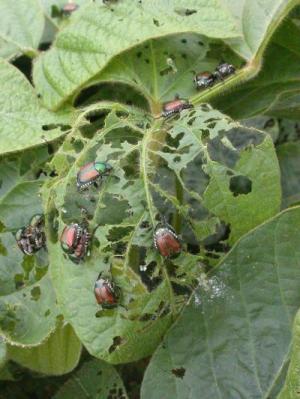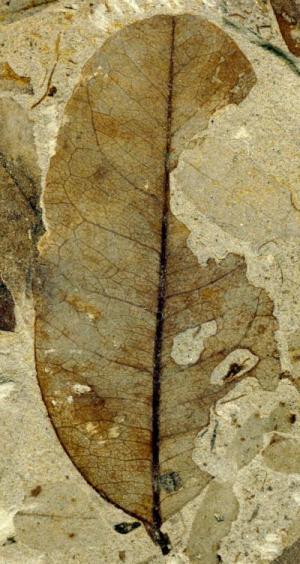More Carbon Dioxide is not necessarily good for plants.
Posted on 18 April 2011 by villabolo
An argument, made by those who deny man made Global Warming, is that the Carbon Dioxide that is being released by the burning of fossil fuels is actually good for the environment. Their argument is based on the logic that, if plants need CO2 for their growth, then more of it should be better. We should expect our crops to become more abundant and our flowers to grow taller and bloom brighter.
However, this "more is better" philosophy is not the way things work in the real world. There is an older, wiser saying that goes, "Too much of a good thing can be a bad thing." For example, if a doctor tells you to take one pill of a certain medicine, taking four is not likely to heal you four times faster or make you four times better. It's more likely to make you sick.
It is possible to help increase the growth of some plants with extra CO2, under controlled conditions, inside of greenhouses. It is based on this that 'skeptics' make their claims. However, such claims are simplistic. They fail to take into account that once you increase one substance that plants need, you automatically increase their requirements for other substances. It also fails to take into account that a warmer earth will have an increase in deserts and other arid lands which would reduce the area available for crops.
Plants cannot live on CO2 alone. They get their bulk from more solid substances like water and organic matter. This organic matter comes from decomposing plants and animals or from man made fertilizers. It is a simple task to increase water and fertilizer and protect against insects in an enclosed greenhouse but what about doing it in the open air, throughout the entire Earth?
What would be the effects of an increase of CO2 on agriculture and plant growth in general? The following points make it clear.
1. The worse problem, by far, is that increasing CO2 will increase temperatures throughout the Earth. This will make deserts and other types of dry land grow. While deserts increase in size, other eco-zones, whether tropical, forest or grassland will try to migrate towards the poles. However, soil conditions will not necessarily favor their growth even at optimum temperatures.
2. CO2 enhanced plants will need extra water both to maintain their larger growth as well as to compensate for greater moisture evaporation as the heat increases. Where will it come from? Rainwater is not sufficient for current agriculture and the aquifers they rely on are running dry throughout the Earth (1, 2).
On the other hand, as predicted by Global Warming, we are receiving intense storms with increased rain throughout of the world. One would think that this should be good for agriculture. Unfortunately, when rain falls down very quickly, it does not have time to soak into the ground. Instead, it builds up above the soil then floods causing damage to the crops. The water also floods into creeks, then rivers, and finally out into the ocean carrying off large amounts of soil and fertilizer.
3. Unlike Nature, our way of agriculture does not self fertilize by recycling all dead plants, animals and their waste. Instead we have to be constantly producing artificial fertilizers from natural gas which will eventually start running out. By increasing the need for such fertilizer you will shorten the supply of natural gas creating competition between the heating of our homes and the growing of our food. This will drive the prices of both up.
4. Too high a concentration of CO2 causes a reduction of photosynthesis in certain of plants. There is also evidence from the past of major damage to a wide variety of plants species from a sudden rise in CO2 (See illustrations below). Higher concentrations of CO2 also reduce the nutritional quality of some staples, such as wheat.
5. When plants do benefit from increased Carbon Dioxide, it is only in enclosed areas, strictly isolated from insects. However, when the growth of Soybeans is boosted out in the open, it creates major changes in its chemistry that makes it more vulnerable to insects, as the illustration below shows.

Figure 1: Plant defenses go down as carbon dioxide levels go up, the researchers found. Soybeans grown at elevated CO2 levels attract many more adult Japanese beetles than plants grown at current atmospheric carbon dioxide levels. Science Daily; March 25, 2008. (Credit: Photo courtesy of Evan Delucia)
Figure 2: More than 55 million years ago, the Earth experienced a rapid jump in global Carbon Dioxide levels that raised temperatures across the planet. Now, researchers studying plants from that time have found that the rising temperatures may have boosted the foraging of insects. As modern temperatures continue to rise, the researchers believe the planet could see increasing crop damage and forest devastation. Science Daily; Feb. 15, 2008.
Figure 3: Global Warming reduces plant productivity. As Carbon Dioxide increases, vegetation in Northern Latitudes also increases. However, this does not compensate for decreases of vegetation in Southern Latitudes. The overall amount of vegetation worldwide declines
In conclusion, it would be reckless to keep adding CO2 to the atmosphere. Assuming there are any positive impacts on agriculture in the short term, they will be overwhelmed by the negative impacts of climate change.
It will simply increase the size of deserts and decrease the amount of arable land. It will also increase the requirements for water and soil fertility as well as plant damage from insects.
Increasing CO2 levels would only be beneficial inside of highly controlled, enclosed spaces like greenhouses.































 Arguments
Arguments































permadefrost which will basically become muck, swamps and a million methane bubbling lakes. I believe I can resolve this issue by adding one word to point #4. That word is "mostly". "While deserts increase in size, other eco-zones, whether tropical, forest or grassland will [mostly] migrate towards the poles; shrinking in land area as they do.